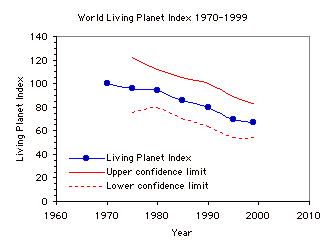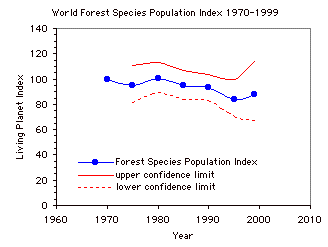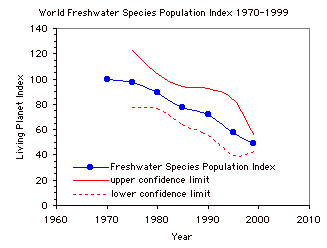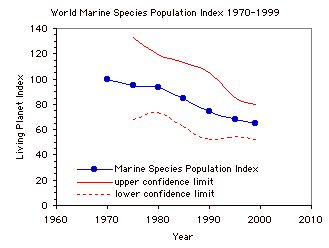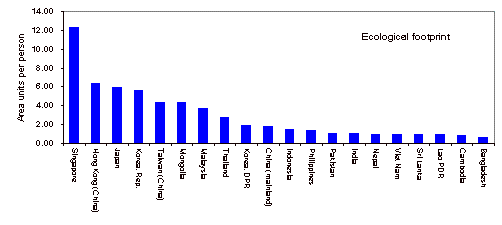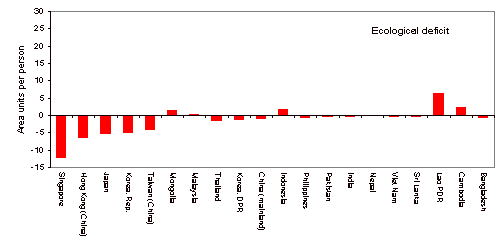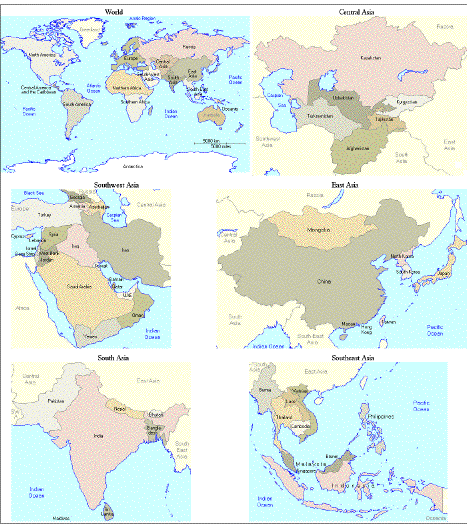NOTE: A shortened version of this document has been published in Bull. E.S.A as:
Wu, J. and C. Overton. 2002. Asian ecology: Pressing problems and research challenges. Bulletin of Ecological Society of America 83(3):189-194.
Jianguo Wu* and Cindy Overton
Landscape Ecology and Modeling Laboratory
(LEML)
Department of Plant Biology, Arizona
State University, Tempe, AZ 85287-1601, USA
*Corresponding author: jingle@asu.edu,
http://www.public.asu.edu/~jingle
Unprecedented economic developments in Asia in recent decades have made it a new center of the world economic growth (see Appendix 1 for the division of Asian regions and constituent countries). With more than a half of the world’s population and a economic growth rate of 2 to 3 times the global average, a variety of ecological and environmental problems in Asia, including air pollution, water shortage and contamination, soil erosion, desertification, and resource depletion, also have become increasingly pervasive and severe. Asian countries vary considerably in natural environment, ecological conditions, economy, and political regimes. Although the quality of life varies greatly among the nations, it tends to be correlated with the quality of the environment in general. With its huge human population and enormous biological resources, Asia’s ecological conditions will continue to be crucial to the overall quality of the global environment. Many of the global ecological connections may be perceived in terms of biodiversity and biogeochemical cycles. As the largest continent in the world, Asia is a major source of global biodiversity. The transportation of greenhouse gases and air pollutants show no respect for the boundaries between nations or even those between continents. According to estimates in 1991, 25% of world emissions of the greenhouse gas CO2 came from the Asia-Pacific region, and if this trend continues, the projected contribution from this region may go up to 36% in 2025 and over 50% by the end of the 21st century (JEC 2000, World Bank 2000). In some cases, such global linkages are quite acute and spectacular. For example, the gigantic dust storm generated in northern China in April 2001 traveled over the Pacific Ocean to North America and then over the Atlantic Ocean! A similar one repeated within less than a year in March 2002.
It seems clear that more than anytime before do ecologist need to become more “global” in their research activities and perspectives because of the inevitably increasing global connectivity in ecology, economy, culture, and politics. Many ecological studies can benefit from a global perspective. This is especially true for human-dominated ecological systems (e.g., urban ecology and agricultural ecology) where cultural and economic differences not only contribute to, but also constitute, the solutions to the problems, and for broad-scale environmental problems (e.g., regional and global ecology) which operate interactively in a global context.
This paper provides a brief overview of some of the pressing environmental problems in Asia as well as challenges in ecological research. In addition, information on various research institutions and organizations in a number of Asian countries is provided, which is hopefully useful for stimulating more international ecological collaborations in these areas.
State of the environment: Living Planet Index and Ecological Footprint
The
state of the environment, in terms of biodiversity and ecosystem services,
has declined throughout the world with the ever-increasing human population
and activities.This trend has been widely documented using various
methods and measures.Two simple synoptic indices, Living Planet
Index (LPI) and Ecological Footprint (EF), are helpful for acquiring an
overall picture of the general environmental conditions at the regional
and global scales.LPI is a measure of the natural wealth of the
Earth's forest, freshwater, and oceanic/costal ecosystems (WWF/UNEP 2000).LPI
is calculated as the average of three indices that monitor population changes
of animal species in forest, freshwater and marine ecosystems, respectively
(i.e., forest species population index, freshwater species population index,
and marine species population index).Each ecosystem index indicates
the average population trend for a sample of animal species, and its value
at the reference year (1970) is set to zero. The forest index includes
319 species, the freshwater index 194 species, and the marine index 217
species (WWF/UNEP 2000).The three indices showed an average decline
of about 12%, 50%, and 35% from 1970 to 1999, respectively, while LPI decreased
by about 33% for the same period (Fig. 1).The regional-level analysis
suggests that LPI for Asia has declined faster than the global average
(WWF/UNEP 2000).
Some pressing environmental problems in Asia
High population density

Fig. 4. Population density and arable land in Asia-Pacific region in 1992 (UNEP www.eapap.unep.org).
The driving forces for the different environmental problems in Asia (as well as in the rest of the world) are fundamentally related to human population growth which increases the use of natural resources and production of wastes.Rapid population growth in Asia has contributed to the destruction of natural habits, wide-spread land conversion, and increased intensities of land use, further resulting in a series of problems of ecosystem degradation including desertification, salinization and alkalization, water-logging, and air and water pollution.
Land degradation
Table 1. Desertification in different regions of the world (from Thomas 1995).
|
Region
|
Total
dryland area (103 km2)
|
|
|||
|
|
|
|
|
||
|
Asia
|
|
|
|
|
|
|
Africa
|
|
|
|
|
|
|
Europe
|
|
|
|
|
|
|
Australasia
|
|
|
|
|
|
|
North
America
|
|
|
|
|
|
|
South
America
|
|
|
|
|
|
|
Total
|
|
|
|
|
|
About 15 million acres (more than 6 million hectares), an area equal to the size of the state of West Virginia, become desertified annually.Of the world’s rangelands, 73% are at least moderately desertified, and 47% of the world’s rain-fed croplands are at least moderately desertified (Asia and Africa most serious).Almost 30% of irrigated cropland is moderately desertified, of which Asia has the highest proportion.The Asia-Pacific region accounts for more than 70% of the world's agricultural population but only 30% of the world's agricultural land.Production increases in the last decades have been achieved at considerable costs to the resource base and largely by means of heavy external inputs: irrigation, seeds, fertilizers, pesticides, etc. (FAO 1996).In many regions of Asia, the loss of vegetation cover and soil erosion due to water and wind are seriously altering the structure and function of natural ecosystems. 16% of Asia's agricultural land are considered severely degraded (loss of 50% of its production potential).In India alone, 38.5% of its 32.77 million hectares of agricultural land has been affected by severe water erosion.China, with one-fifth of the world population, has more than 358,800 km2 of desertified lands; over 96% of these areas (345,046 km2, including potential desertifying and desertified areas) is found in northern China (Zhu 1989, Wu and Loucks 1992).This large-scale land degradation in northwestern China may have been a major factor for the rapid increase in the frequency and scope of the horrifying dust-storms in recent decades, which blacked out the city of Beijing and dimmed the sky of the western states of USA.
The two major types of land degradation in Asia-Pacific are water erosion (523.4 million ha, 61%) and wind erosion (238.6 million ha, 28%), together accounting for nearly 90% of the degraded lands (UNEP www.eapap.unep.org).Although both human activities and climate variations contribute to desertification, overcultivation, overgrazing, urbanization, fuelwood collection, and salinization are the primary causes.In the Asia-Pacific region 310 million hectares(37%) of degraded lands was caused by vegetation removal, 280 million hectares (33%) by overgrazing, 212 million hectares (25%) by agricultural activities, 46 million hectares (5%) by overexploitation, and 1 million hectares (<1%) by industrial activities (Oldeman 1994, UNEP/ISRIC 1990, UNEP 2000).
Efforts of land rehabilitation have been made in Asia.For example, China has achieved remarkable progress in controlling soil erosion through the implementation of water and soil conservation measures since the early 1980s.About 22% of China’s desertified land was rehabilitated or treated to stop further deterioration in the past few decades (UNEP 2000).Watershed management programmes have been implemented extensively in India to combat the problem of soil erosion, and over 30,000 hectares of shifting and semi-stable sand dunes have been treated with shelter belts and strip cropping (UNEP 2000).
Urbanization has profoundly transformed the natural landscapes everywhere throughout the world, inevitably exerting pervasive effects on the structure and function of ecosystems.According to United Nations, the world urban population was only a few percent of the global population in 1800's, but increased to nearly 30% in 1950 and reached 50% in 2000.Nearly 40% of the population of the Asia-Pacific region is urban, and the region owns 13 of the 25 largest cities of the world.It has been estimated that by 2015 about 903 million people in Asia will live in cities with more than one million population (WRI/UNEP/UNDP/WB 1996, 1998).While the world urban population is projected to rise to 60% by 2025, nearly half of this is to reside in the Asia-Pacific region.Undoubtedly, urbanization in Asia will continue to have significant impacts on the environment as well as on economic, social and political processes at local, regional and global scales (e.g., ESCAP 1993, Ness and Low 2000).
Rapid urbanization in most developing countries in Asia since the 1990s has been accompanied by a proliferation of slums and dysfunctional neighborhoods with high health risks.For example, it was reported that only 8 of the 3,119 towns and cities in India had full wastewater collection and treatment facilities and 209 have partial treatment facilities (ESCAP 1993, UNEP 2000).High rates of urbanization and industrialization have increased the demands for land, water, and energy, and resulted in expanding transportation networks that constitute a key accelerating factor in economic growth as well as environmental degradation.For example, urbanization and economic growth in many Asian countries frequently result in air and water pollution, loss of productive agricultural land, loss and fragmentation of species habitats, over-extraction of groundwater resources, and deforestation as a consequence of increased demand for construction timber (UNEP 2000).It is important to realize that the ecological influences of cities go far beyond the space they occupy.Their ecological footprints can be enormous because of their huge demands for energy, food and other resources, and the regional and global impacts of their wastes and emissions to soil, air and water (UNEP 1999, Luck et al. 2001).
Loss of biodiversity
Table 2.The total number of known species in selected countries of the Asia-Pacific region (IUCN 1994, UNEP www.eapap.unep.org).
|
|
|
|
|
|
|
|
China
|
|
|
|
|
|
|
Indonesia
|
|
|
|
|
|
|
Thailand
|
|
|
|
|
|
|
Australia
|
|
|
|
|
|
|
India
|
|
|
|
|
|
|
Malaysia
|
|
|
|
|
|
|
Papua
New Guinea
|
|
|
|
|
|
|
Lao
PDR
|
|
|
|
|
|
|
Pakistan
|
|
|
|
|
|
|
Japan
|
|
|
|
|
|
|
Bangladesh
|
|
|
|
|
|
|
Cambodia
|
|
|
|
|
|
|
Afghanistan
|
|
|
|
|
|
|
Bhutan
|
|
|
|
|
|
Environmental pollution

Fig. 5. The number of threatened species by group in selected countries of the Asia-Pacific region (IUCN 1994, UNEP www.eapap.unep.org).The number of threatened species includes all species that are classified by the World Conservation Union as endangered, vulnerable, rare, and indeterminate, but excludes introduced species and those that are known to be extinct or whose status is insufficiently known.
Asia in which agriculture is the primary industry.For example, India alone uses 55,000 metric tons of pesticides a year, of which 25% end up in the sea, and the increased use of pesticides has resulted in contamination of shell and finfish (UNEP 2000).The "red tides", caused by blooms of particular plankton species, deplete oxygen levels resulting in mass deaths of aquatic organisms, and cause paralytic shellfish poisoning that poses human health risks.Red tides have recently become a major environmental and economic problem in several coastal areas of Philippines, China, and other Asian countries (UNEP 2000).

Table 3.Air quality in 11 megacities of the Asia-Pacific region (UNEP www.eapap.unep.org).
|
City
|
|
|
|
|
|
Bangkok
|
|
|
|
|
|
Beijing
|
|
|
|
|
|
Bombay
|
|
|
|
|
|
Calcutta
|
|
|
|
|
|
Delhi
|
|
|
|
|
|
Jakarta
|
|
|
|
|
|
Karachi
|
|
|
|
|
|
Manila
|
|
|
|
|
|
Seoul
|
|
|
|
|
|
Shanghai
|
|
|
|
|
|
Tokyo
|
|
|
|
|
Challenges for ecological research
2.Integrating research with applications
In order to effectively integrate research with applications, ecologists are challenged to deal with real-world problems, to work directly with resource managers, planners, and policy makers, to communicate across disciplinary boundaries, and to go beyond the “research-publication sequence” to follow through the “research-application cycle”.Given the variety of political and economic conditions in Asia, such integration may take different forms and be carried out at different scales.
3.Large-scale ecology
Most environmental problems, such as biodiversity loss, land degradation, pollution, urbanization, and global climate change, must be dealt with on multiple and broad scales in time and space.Arguably, landscapes and regions based on biogeographical units and bioclimatic conditions may represent scales at which many of the pressing environmental problems can be tackled most effectively.Dealing with large-scale ecological phenomena requires theory, methods, and technologies (e.g., GIS and remote sensing) to acquire, analyze, and synthesize information on spatial heterogeneity of biodiversity and ecological processes across a range of scales.In particular, landscape and regional ecology, which is among the weakest areas in Asian ecology, ought to play a much more important role.In general, to achieve any long-term success in biodiversity conservation, ecological restoration, or environmental management, the landscape and regional context must be explicitly considered.
4.Interdisciplinary and holistic ecological research
Holistic research methods that emphasize the nonlinear interactions, emergent properties, and integrity of systems are quite familiar to many scientists in Asian countries (especially China and Korea).However, such approaches have to go beyond the current more or less philosophical frameworks based on doctrines such as “yin-yang”, “five-element”, and “feng-shui”, and substantiate them with rigorous scientific methods.Also, interdisciplinarity is or should be a hallmark of crisis-oriented and large-scale ecology.To effectively study and resolve the pressing environmental problems in Asia, successful integration among different disciplines in earth sciences and between natural and social sciences is imperative.Such integration requires holistic approaches as well as collaborations among scientists, practitioners, and policy-makers.
5.Education and training
Comprehensive and integrative university curricula and professional training programs (within and outside academic institutions) need to be established and strengthened.These curricula and training programs should emphasize the interdisciplinarity and holistic nature of environmental and ecological problems.They also need to highlight the unique ecological and socioeconomic characteristics of Asian ecosystems, and accommodate the diverse needs of students and professionals who have different interests and backgrounds.In addition, through outreach programs and other means, effective communication with the public and decision makers needs to be considered explicitly part of the ecological program at both the university and national levels.
6.International collaborations
International collaborations are critical for meeting any of the above challenges in Asian ecology because: (1) The majority of the recent advances in ecological theory and applications have been made outside Asia, (2) As compared to the western world, most Asian countries have a relatively small number of ecologists with respect to their huge population sizes and they are often inadequately trained, (3) Many of the pressing environmental problems in Asia go beyond individual countries and even the continent, and (4) Ecological research in most Asian nations, especially those developing countries, are seriously limited by funding sources.
There already exist several rather visible international collaborative networks that involve many countries and regions in Asia, such as MAB (Man and Biosphere), ILTER (International Long-Term Ecological Research network), and GCTE (Global Climate and Terrestrial Ecosystems) of IGBP (International Geosphere and Biosphere Programme).Also, in recent decades there have been an increasing number of international collaborative research projects, concentrating on the tropical and subtropical regions of Asia.However, more international collaborations at different levels and in different forms are needed, which include ad hoc and periodic international training programs and workshops for students and researchers, and collaborative research projects at the levels of individual investigators, institutions, nations, and international organizations.
With
the increasing “globalization” of ecological problems and ecologists’ search
for understanding and solutions, it is likely that more ecological scientists
want to be engaged in international collaborations in Asia.This
paper, in a way, is intended to be a stimulus for promoting further research
collaborations between ecologists in Asia and the rest of the world.Finding
out the needed information on potential collaborative institutions or researchers
in some Asian countries can still be difficult, although the situation
is improving thanks to the advances in information technology.We
have compiled a number of research institutions in Asian countries, with
brief introductions and web addresses, which hopefully will be useful to
those
who are interested in ecological studies in Asia (Appendix 2).
Acknowledgements
The
preparation of this document was in part supported by Ecological Society
of America through a grant to Asian Ecology Section.We thank the
following people for providing assistance and useful information: K. F.
Akbar (Pakistan), N. Kachi (Japan), S. Lele (India), J. B. Levenson (USA),
W.-J. Shen (China), S.P. Singh (India), A. T. Smith (USA), and X. Ben Wu
(USA).
Literature Cited
Berge, E., editor. 1997. Transboundary Air Pollution in Europe. Norwegian Meteorological Institute, Oslo, Norway.
Braatz, S. 1992. Conserving Biological Diversity: A Strategy for Protected Areas in the Asia-Pacific Region. World Bank, Washington D.C.
ESCAP. 1993. State of Urbanization in Asia and the Pacific, United Nations, New York.
FAO. 1996. Technology Assessment and Transfer for Sustainable Agriculture and Rural development in the Asia-Pacific Region. [www.fao.org/sd/rtdirect/rtre0019.htm]
Folke, C., and A. Jansson. 1997. Ecosystem appropriation by cities. Ambio 26:167-172.
Folke, C., N. Kautsky, H. Berg, A. Jansson, and M. Troell. 1998. The ecological footprint concept for sustainable seafood production: A review. Ecological Applications 8:S63-S71.
IUCN. 1994. IUCN Red List of Threatened Animals. International Union for the Conservation of Nature, Gland, Switzerland.
JEC (Japan Environmental Council). 2000.The State of the Environment in Asia (1999/2000). Springer, Tokyo.
Lelieveld, J., P. J. Crutzen, V. Ramanathan, et al. 2001. The Indian Ocean experiment: Widespread air pollution from South and Southeast Asia. Science 291:1031-1036.
Luck, M., G. D. Jenerette, J. Wu, and N. Grimm. 2001. The urban funnel model and spatially heterogeneous ecological footprint. Ecosystems 4:782-796.
Ness, G.D, and M. M. Low. 2000. Five Cities: Modelling Asian Urban Population-Environment Dynamics. Oxford Press, New York.
Oldeman, L.R. 1994. Global Extent of Soil Degradation. Pages 99-118 In D.J. Greenland and I. Szabolcs, editors. Soil Resilience and Sustainable Land Use. CAB International, Wallingford.
Thomas, D. S. G. 1995. Desertification: Causes and processes. Pages 463-473 in W. A. Nierenberg, editor. Encyclopedia of Environmental Biololgy. Academic Press, San Diego.
UNEP. 1999. Global Environment Outlook-2000. [www.grida.no/geo2000/english/index.htm]
UNEP. 2000. Asia-Pacific Environment Outlook. Environment Assessment for Asia and the Pacific. [http://www.eapap.unep.org/apeo/toc.html]
UNEP/ISRIC. 1990. Causes of land degradation. [www.unep.org/unep/eia/geo1]
Wackernagel, M., and W. E. Rees. 1996. Our Ecological Footprint: Reducing Human Impact on the Earth. New Society Publishers, British Columbia, Canada.
WCMC. 1992. Global Biodiversity: Status of the Earth's Living Resources. Chapman and Hall, London.
World Bank. 2000. East Asia and Pacific Region Annual Review. [www-esd.worldbank.org/envmat/EAP.pdf]
Worldwatch Institute. 1998. Vital Signs 1998. Worldwatch Institute, Washington D. C.
WRI/UNEP/UNDP/WB. 1996. World Resources 1996-97. Oxford University Press, New York.
WRI/UNEP/UNDP/WB. 1998. World Resources 1996-97. Oxford University Press, New York.
Wu, J., and O. L. Loucks. 1992. Xilinggele grassland. Pages 67-84 in The U.S. National Research Council. Grasslands and Grassland Sciences in Northern China. National Academy Press, Washington, D.C.
Wu, J. 2001. Desertification. Pages 70-73 In: R. Robinson, editor. Plant Sciences. Macmillan Reference USA, New York.
WWFN. 2000. Living Planet Report 2000. [www.panda.org/livingplanet/lpr00]
Zhu, Z.1989.Desertification and Its Treatment in China. Science Press, Beijing.
|
Asia-Pacific
|
China,
South Korea, North Korea, Mongolia, Japan, Afghanistan, Bangladesh, Bhutan,
India, Iran, Nepal, Pakistan, Sri Lanka, Cambodia, Lao PDR, Myramar, Thailand,
Viet Nam, Indonesia, Malayasia, Philippines, Singapore, Fiji, Papua New
Guinea, Soloman Islands, Australia, New Zealand
|
|
|
|
|
East
Asia
|
China,
South Korea, North Korea, Mongolia, Japan
|
|
|
|
|
South
Asia
|
Afghanistan,
Bangladesh, Bhutan, India, Iran, Nepal, Pakistan, Sri Lanka
|
|
|
|
|
Southeast
Asia
|
Cambodia,
Lao PDR, Myramar, Thailand, Viet Nam, Indonesia, Malayasia, Philippines,
Singapore
|
|
|
|
|
Pacific
|
Fiji,
Papua New Guinea, Soloman Islands, Australia, New Zealand
|
